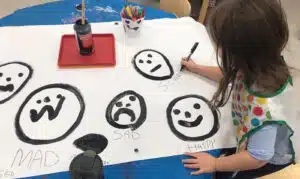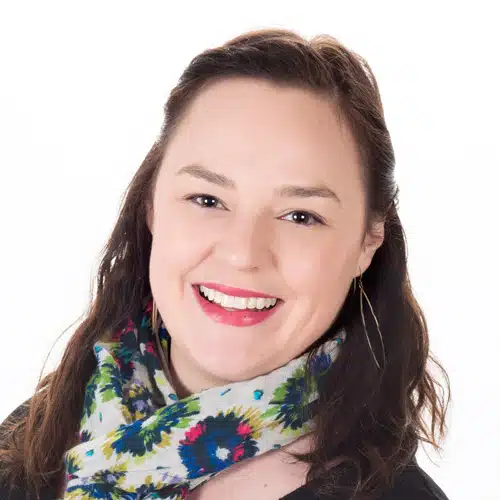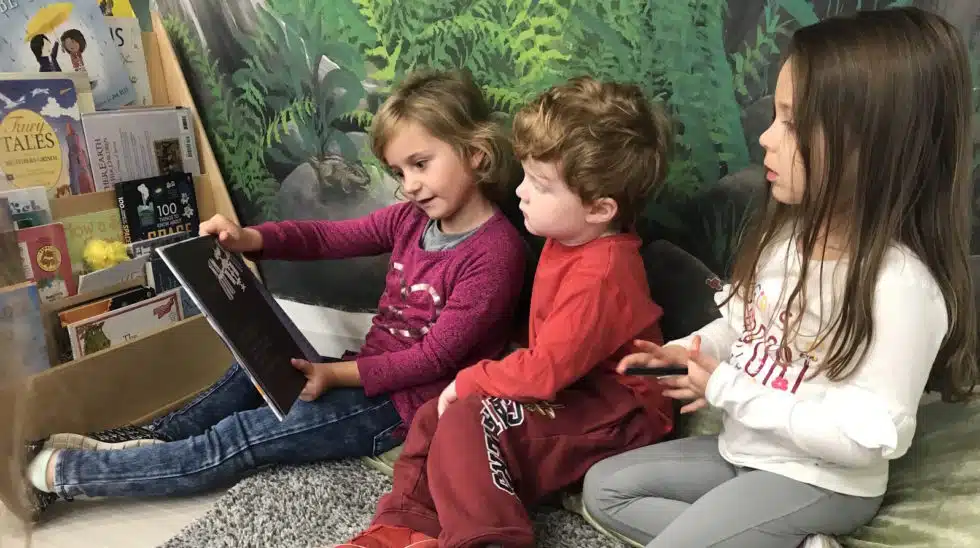If you’ve got a little one at home who will be 5 years old on or before September 1st, 2020, you were probably preparing for their transition out of preschool and into Kindergarten. But then COVID-19 happened, and so many parents’ nerves about this upcoming transition were magnified. If you’re feeling the pressure, let’s talk!
First off, the most important thing for you and your child is to make sure you are handling the many emotions caused by this major shift in routine for everyone.
It will be so much easier for your child to start their new academic journey in the Fall if you’ve all

Next, let’s talk about pre-academic skills, or the dreaded term “Kindergarten Readiness”.
Now, I’m not a big fan of that term for many reasons, but mainly because just as we need to prepare our children for a new school environment, that new school environment needs to be prepared for them as well. And, across the country, Kindergarten programs are being subjected to academic trickle down. Meaning that, Kindergarten today looks a whole lot more like First or even Second grade did a decade ago. But, the human brain and body isn’t developing faster than it was ten years ago, so it is developmentally inappropriate to set such high standards for our five year olds. All that being said, so many Kindergarten teachers are working just as hard as preschool teachers to advocate for more play, less worksheets, and less stress in the classroom, but we can also do our part in the way we foster pre-academic skills in our little ones. Here are some great ways to do that:
1. Provide plenty of time for open-ended play that has no expectations from adults
Play is how young children learn, and how they process the world around them; with so much changing in their world right now, they need extra time to play it out. Also, play gives endless opportunities to build problem solving skills, critical thinking, and the capacity to take the perspective of others. Check out our favorite preschool supplies that you can set up at home, here.
2. Find authentic opportunities to interact with text
Read a story, and act it out. Have your child “read” a familiar story to you while looking at the pictures. Let your child dictate a story of their own, and work to make your own book. Help them sound out and write words that have meaning to them; like their name. Show them, by example, the many ways you read and write each day, and how important it is.
3. Look for the math in the world around you
Sort their toy cars by color, then make a tally or graph of your findings. Take a poll of all of your relatives’ favorite colors and record your findings. Find opportunities to use important mathematical terms like “more than”, “less than”, “equal to”, and “the same as”. How many stairs are in your house? Do you have more fruits or more vegetables in the fridge? Look for patterns. Just like with reading, show by example, the many ways you use math each day. You can also check out our Money Sense Math Class for more ideas, too!
4. Work together to ask questions and find answers
Follow the lead of your child’s curiosity. Write down their questions about the world around them, and research the answers together online, in books, and by interviewing people in your life. Learning to ask meaningful questions and ways to find answers is perhaps the most part to fostering curiosity and intrinsically motivated learning.
5. Move your bodies
For little ones, a moving body is a learning body! Running, jumping, climbing, peddling a bike, rolling, and crawling are so important not only for gross motor development, but to also ensure that both sides of the brain are in communication. These connections are the foundation for reading and writing. Also, strong tummy muscles will ensure your little one can sit up and focus during school. And, strong arms, wrists and hands will make sure your child can focus on creativity while writing and drawing.
Notice how worksheets or workbooks are not included in that list. This is because there are so many more age appropriate ways to engage a young mind that do a better job fostering creativity, problem solving, out-of-the-box thinking and whole body engagement. Now, if you’ve got a letter workbook, or a bunch of worksheets about dinosaurs that your child likes spending time on, that doesn’t mean you should throw them away. But, time spent on them should be child initiated, and balanced between other activities.
The most important thing to keep in mind is that, while your child may be missing out on their final months of preschool, they are gaining time with you, their first and best teacher. Come September, they will be joining a cohort of children who have all also had this same experience, and will be welcomed with open arms by new teachers who will meet them right where they are; picking up wherever you were able to leave off. Children are incredibly resilient, and hard wired for learning. They will catch up, move on, and hopefully inspire all of us to do the same.

Samantha Perry
Samantha Perry is the Director of Bubbles Academy’s Arts-Integrated Preschool Program. She is also the recipient of the Harris Foundation’s Scholarship for Excellence in Leadership and received her Master of Science in Child Development with a specialization in Administration at Erikson Institute. The Harris Excellence Scholarships are awarded annually to a select number of students with excellent academic credentials and a demonstrated commitment to the field of early childhood.
Sam is grateful for the opportunity to use both her theatrical expertise, and broad knowledge of needs of young children at Bubbles Academy’s arts-integrated preschool program. As an educator, Sam strives to inspire confidence, independence, curiosity and creativity in each of her students every day.
